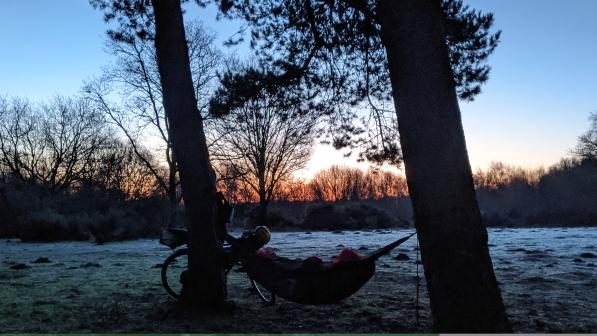Group test: Tents for cyclists

For most of us it’s looking like another summer of staycations. Don’t fancy spending lots on hotels and want to make sure you’re staying where the air is fresh? Camping is ideal – assuming you can get hold of a tent. We struggled to find two-person, three-season tents for this review. (Two-person versions of the three-person tents we tested should be back in stock at some point.)
One benefit of cycle camping is that many campsites have a location dedicated to the car-free camper, so ‘campsite full’ signs won’t always apply to you. But do check ahead unless you want to practise your wild camping skills.
With advances in tent technology, gone are the days of cumbersome A-frames. Most tents from outdoor specialists are light, strong, and easily packable into a pannier with room to spare. Well cared-for tents will last years, so it’s worth investing if you’re planning on camping regularly. A well-used tent will end up far cheaper than the same amount of nights in a hotel.
Decathlon Forclaz Trek 900 £219.99

At 2.68kg, this is the heaviest tent here. The flysheet is grey, which will only blend in above the snow line. It’s a freestanding tent with two entrances and three porches, the third accessed via a zip in the inner. Unlike most tents, each porch area has an extension of the groundsheet, keeping your items away from the ground. Other details include a tag on the zip of the outer doors, which connects to the flysheet. This pulls the outer up and out of the way as you open the door, preventing flapping in poor weather.
A good, comfortable, three-person summer touring tent.
Alpkit Jaran 3 £229.99

About 300g lighter than the Forclaz, the Jaran is another freestanding tent but one I’d feel more comfortable taking into the wilds. It’s spacious, has two porches, and can be set up with just six stakes in the ground. There’s plenty of ventilation: with two sleeping in it there was no condensation in the morning. It sets up inner first, which is better in hot, dry climates than cold, wet ones. If you ever find you no longer have a use for your tent, Alpkit’s Continuum Project will keep it going and find it a new home.
Spacious and robust freestanding tent for three.
Terra Nova Laser Compact 2 £500

At just 1.29kg, this is a great option for weight weenies who don’t mind missing out on comfort. Sleeping head to toe, it’s a very cosy two-person tent (but luxurious for one) that you won’t want to linger in. It’s quick and easy to set up – outer first, so keeping dry is easier – and you can pack lighter by using just the fly. There are two entrances but only one porch. A low profile and forest green colouring make it ideal for stealth camping. The poles are 30cm long, so they will fit bikepacking handlebar rolls.
Lightweight, cosy performance tent. High cost but built to last.
Vango Nevis 300 £130

The Nevis feels like a larger, heavier (2.46kg) version of the Laser – at a quarter the price. It’s more spacious inside (being meant for three) but you lose the Laser’s lower profile and shorter poles. Strange tension straps make set-up and take-down a bit awkward. The outer is a Protex 70 denier polyester flysheet, which is great at keeping water out… and condensation in. For two people it’s a comfortable tent but, with only one porch, space is limited for two sets of panniers, let alone three.
Reasonably priced first tent that should give years of service.
Verdict
It’s a close-run thing between the Decathlon and Alpkit tents. Both have loads of space and I’d imagine they’d still be comfortable for two in their two-person variations. I’d slightly favour the Forclaz for what I’d hope a summer holiday would be – full of sun – but I’d pick the Alpkit Jaran if I were planning a trip with variable weather likely.
Terra Nova’s Laser is a fantastic tent for lightweight expeditions into the backcountry. What you give up in comfort, you make up for in pack size and weight; it’s easy to see why it’s an award winner. Vango’s Nevis uses a similar design. While not as neat or light, it’s a reliable shelter that won’t break the bank.




